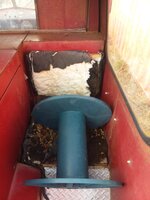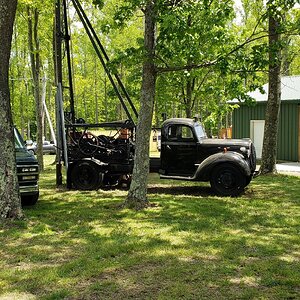Heber Richins
Well-Known Member
This is a 1948 American Lafrance 700 series fire truck. Built in 1948 by the American Lafrance for the Modena Fire company in Chester County, PA. After 15 years in service, it was sent back to American Lafrance to be refurbished and the lights upgraded. in the 1970s the truck was sold to a gentleman in Eastondale, MA. Eventually the truck made its way out here to New Mexico. in the late 1990s early 2000s the truck was sold in auction to a Mr. Allen Hill who helped found the Lordsburg Hidalgo County Museum where I volunteer. a short time later, the truck was in the middle of the Light parade in Lordsburg when it came to a stop and died, mice had gotten into the electrical systems. the truck was towed through the rest of the route and was then taken to the Museum and placed behind it, in between two shipping containers, and has remained there ever since. a couple months ago after seeing it for the first time, I did some research on it, found where it came from originally, and when it was made. I also asked the Modena Fire department about it, and they were able to give me some info on it. once i learned there was plans to restore the truck I volunteered to help with the project. Last week I started out by cleaning out any trash, mice droppings, cobwebs, dirt and dust from inside the cab. got most of it out this last week, tomorrow I will do scrub the floor of the cab to get any remaining dirt and junk off the floor, and then get started on the back part of the cab. Next week i want to finish whatever i can of the cab then work on the side compartments then the back compartments. then I'll work on cleaning the vegetation away from the truck.
The Restoration Project will cost up to $30,000, however the museum is hoping to get the truck restored for less. the truck is the middle one out of the 3.









The Restoration Project will cost up to $30,000, however the museum is hoping to get the truck restored for less. the truck is the middle one out of the 3.



